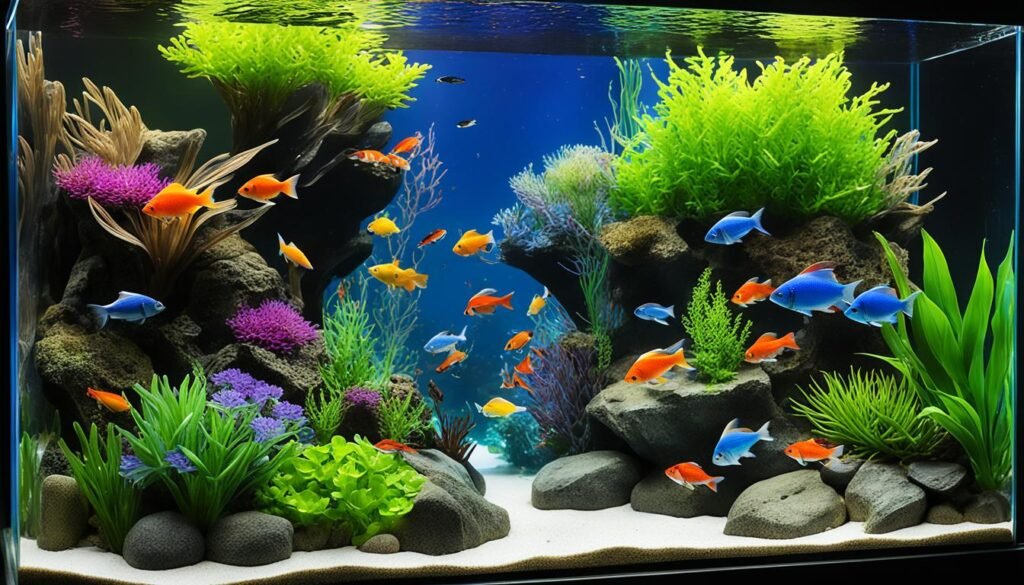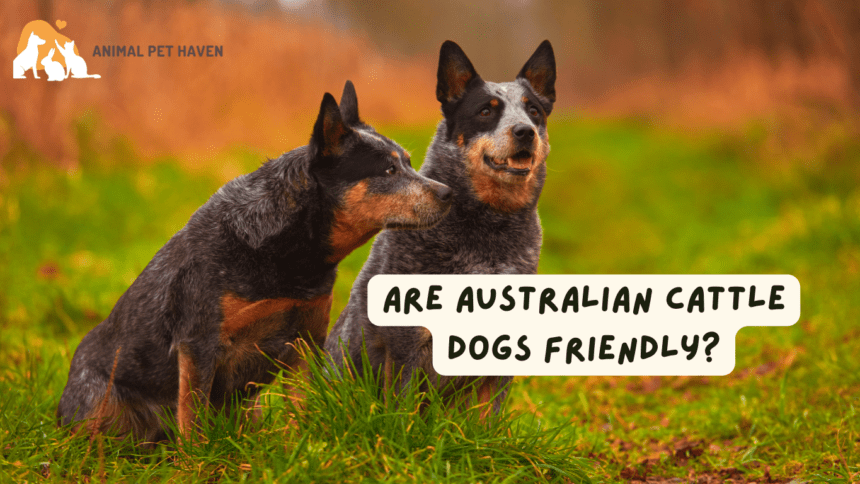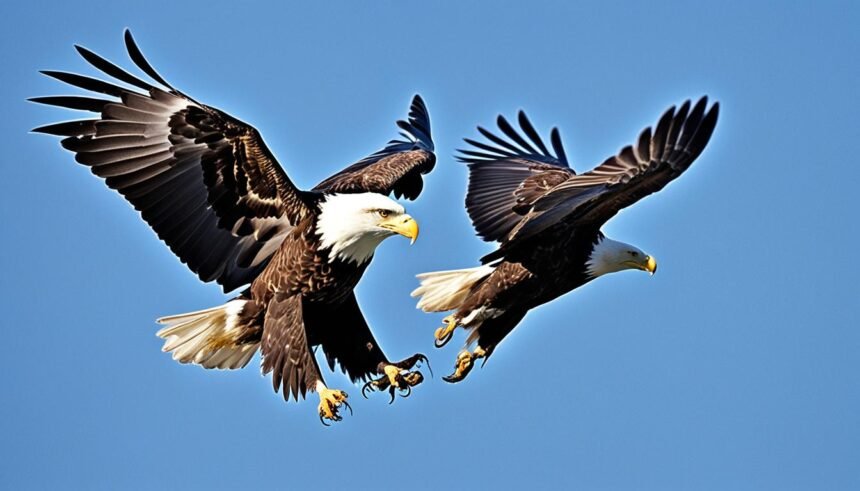A beautiful aquarium is more than its fish; it’s a piece of serenity and art for your home. Watch as rainbowfish glide in a perfect 20-gallon tank, their colors sparkling. Or see how light plays in a sleek, minimalist Iwagumi setup. Each detail adds to the beauty of the aquarium. Today’s aquarium design is an art, blending nature with creativity for breathtaking aquatic scenes.
With so many styles available, aquarium lovers can really get creative. Take the colorful Dutch-style, full of diverse plants, or the natural layouts that mirror underwater landscapes. A great fish tank shines in its design and upkeep, making a captivating living artwork. Explore the world of aquariums, where each tank is a unique story of life and beauty.
The Enchantment of Aquariums in Modern Homes
Aquariums bring the past into our homes, from ancient Rome’s marble tanks to today’s sleek designs. They capture more than our gaze with their peace and beauty. They mix art and nature, combining colorful plants and lively fish.
Understanding the Appeal of Aquatic Displays
Today’s aquariums are windows to a peaceful world. They bring quiet to our busy life. They’re easy to look after and full of life. With colorful fish and plants, they meet our deep need for nature.
A Journey from Ancient Rome to Today’s Aquariums
The hobby of keeping fish has changed a lot over time. Today’s tanks are very different from the past. They’re now beautiful art pieces, with bright lights and well-placed coral.
The Tranquility Brought by Underwater Scenery
A tropical or coral fish tank needs art and science for calm. Careful planning and attention keep the tank healthy.
- Freshwater tanks: Easier to maintain, featuring an array of life and plant diversity.
- Saltwater tanks: Provide a broad array of species, though require more maintenance.
- Coral and vegetation: When placed thoughtfully, they magnify the tank’s visual splendor.
- Fish introduction: Proper acclimation is vital to prevent distress within the aquatic community.
| Maintenance Level | Freshwater Tank | Saltwater Tank |
|---|---|---|
| Initial Setup | More straightforward | Comprehensive, involving |
| Species Variety | Diverse | More extensive |
| Long-Term Care | Less demanding | Requires detailed know-how |
| Visual Impact | Lively and dynamic | Vivid, with the possibility for coral placement |
Looking at aquariums shows how they blend history with modern design. They mix the calm of fish with the excitement of art. This shows how our love for aquariums has evolved.
Finding the Perfect Spot: Placement and Lighting Tips
A contemporary fish tank significantly boosts home decor. Yet, placement and lighting are crucial for its impact. If placed in too much sunlight, your tank might face algae problems. Proper lighting, meanwhile, brings out the beauty of your fish and their world.
Choose a room where the fish tank will shine but not clash with your decor. It should be a central feature without overpowering the space.
Right placement is vital for your fish’s health and your room’s feel. Keep the tank out of direct sunlight to prevent algae. Use lighting to simulate the natural day, keeping it on for 7 to 10 hours. This balance showcases your fish without encouraging algae.
| Aquarium Statistics | Benefits |
|---|---|
| 10 to 12 pounds per gallon | Ensures stability and support for aquarium structure |
| 1.5 to 2 pounds of gravel per gallon of water | Provides ample substrate for plant growth and beneficial bacteria |
| 75° to 80° F for tropical fish | Ideal temperature range for most tropical aquarium fish |
| 25 percent water change every 2 to 4 weeks | Maintains a clean environment and stable water parameters |
| Feeding twice a day | Supports fish health without overfeeding |
The weight of a filled aquarium can be quite heavy, from 10 to 12 pounds per gallon. Make sure the spot you choose can hold that weight. Talk to a retailer before you start. They can advise on the best fish for your tank, how many to have, and more.
Choosing the right spot, managing the light, and these tips make your aquarium a stunning, live art piece. It will make your living space and day better.
Creating a Sustainable Ecosystem: Maintenance and Care
Building a thriving, long-lasting aquarium combines maintenance, care, and know-how. To achieve a sustainable ecosystem, understanding the needs of both freshwater and saltwater tanks is key. Regardless of your choice, the health of your aquarium depends on regular cleaning, stopping algae, and balancing all living things.
Freshwater vs Saltwater: Choosing Your Challenge
The choice between freshwater and saltwater tanks marks the start of your aquarium adventure. Freshwater setups appeal for their simplicity and ease, attracting both beginners and experts. On the other hand, saltwater tanks offer a deeper challenge, requiring more care but rewarding with vibrant marine life. Southwest Aquaculture offers guidance for both, helping you navigate the complexities of your chosen path.
Cleaning and Algae Prevention Strategies
Keeping your aquarium clean and clear is vital. Algae not only block the view but also harm your tank’s health. To fight algae, change water regularly, check equipment often, and clean thoroughly. Using tanks that help prevent algae is smart, but regular maintenance is still crucial.
Aquarium Health: Balancing the Needs of Fish and Plants
A balanced tank supports both fish and plants. It’s a home for your fish and a place for plants to thrive. To achieve this, choose fish like Mollies and Neon Tetras, known for their adaptability. Pair them with hardy plants such as Java Fern and Amazon Sword for low-maintenance care.
- Ensure the substrate, like sand or gravel, is properly layered to aid plant rooting and nurture beneficial bacteria for safe filtration.
- Employ quality aquarium filters based on tank size to maintain water quality and oxygen levels vital for both fish and plants.
- Provide sufficient fluorescent or LED lighting to simulate the natural UV light required for the sustainable growth of the ecosystem.
- Practice regular maintenance, including water changes every few weeks to manage pH level, temperature, and salinity, thus minimizing disruption within the tank.
- Introduce decor that not only elevates the tank’s aesthetic appeal but also contributes to the pragmatical needs of its inhabitants.
- Consult with specialists such as those at Southwest Aquaculture to acquire the expertise necessary for a healthy aquarium.
Following these guidelines ensures your aquarium stays lively and sustainable. It becomes a source of beauty and calm for viewers and a safe space for your aquatic friends.
Aquarium Fish Tank Design: Merging Aesthetics with Functionality

Aquariums mix beauty with purpose. They bring peace to our homes and create a healthy place for fish. It’s key for both new and seasoned fish lovers to mix appealing designs with a habitat that supports the fish.
The Importance of Fish Tank Sizing and Compatibility
Choosing the right size for a tank is crucial in aquarium design. For beginners, tanks of 20 gallons or more are best because they handle changes better. Glass tanks are preferred for those under 75 gallons because they’re easier to clean and last longer.
Having tanks that get along with each other is also key. It’s said that 40% of American fish lovers have more than one tank. This helps keep different fish happy and makes their home more diverse.
Decorative Tips: Combining Beauty with Purpose
A well-arranged aquarium catches the eye and meets the needs of its fish. Decorations are not just for looks. They’re key for the tank’s ecosystem, offering hiding spots for fish and helping with the nitrogen cycle.
Plants add beauty and help the tank too, by making oxygen and using up waste. It’s also important to think about costs. Getting the right filters doesn’t have to break the bank but should be both beautiful and practical.
Aquariums offer many benefits like lowering stress and making us happier. They are a beloved hobby in the U.S., ranked as the second-most popular. The right aquarium setup not only looks great but is also important for research. It’s estimated that Americans have about 139 million freshwater fish and 9.6 million saltwater fish.
Decorating your tank well means picking the right plants and placing them wisely. This makes the tank beautiful without messing up the balance needed for the fish.
- Consider power filters: They effectively circulate water, processing the entire tank volume twice hourly.
- Adjustable submersible heaters are recommended, allowing precise temperature control to within ±1°F.
- Investing in quality equipment from local fish stores may result in healthier animals and better customization to specific tank needs.
An amazing aquarium design is more than just looks. It’s about creating a lively and beautiful space that feels great to be around.
Inspiration from the Depths: Saltwater and Coral Tanks
Imagine bringing the ocean’s spirit into your home, all inside a glass tank. Saltwater and coral tanks are tiny ecosystems. They reflect the complex and beautiful life found deep in the sea. These tanks are filled with colorful fish and exotic creatures. They show the beauty and variety of the ocean.
Emulating the Ocean’s Majesty in Your Living Room
Setting up saltwater tanks is like creating a natural masterpiece. It’s about capturing the ocean’s movements. By choosing corals and marine life, you create a scene that is both stunning and calming. This hobby needs more care but offers a beautiful view of the underwater world from your home.
Arranging Corals for Visual Impact
Placing corals in tanks is an art that combines science with beauty. Aquarists arrange living corals to mimic the sea bed. Colorful fish swim around these corals, bringing the beauty of the ocean to life.
Those who keep coral tanks contribute to something bigger. Their tanks are more than pretty; they educate and inspire. They show the importance of corals in the ocean. Here is a link with true stories of conservation and progress in this field:
| Conservation Initiative | Species | Detail |
|---|---|---|
| Species Survival Plan | African penguins, frogs, cuttlefish, corals | Steinhart Aquarium biologists work on projects to save species and keep them diverse. |
| Coral Reef Restoration | Critically Endangered Corals | A UAE effort grows corals that can withstand heat. This helps save reef ecosystems. |
| Sea Turtle Rehabilitation | Cold-stunned sea turtles | Turtles from Massachusetts get help in Florida and North Carolina to recover. |
| Aquatic Species Reproduction | Sunflower sea stars, baby sea dragons | Efforts are made to breed endangered and rare species in captivity. |
By carefully arranging corals, aquarium lovers do more than create beauty. They support conservation and animal well-being. Saltwater and coral tanks help us learn about and protect marine life. They honor the ocean’s richness and the need to keep it safe.
Dramatic Aquascapes: Designing an Underwater Landscape

The art of aquascaping turns a standard aquarium into a magical water world. It is an advanced process that combines creativity with the science of water ecosystems. An aquascape is not just decoration. It’s an experience that brings us close to nature’s wonders underwater.
Looking at the International Aquatic Plants Layout Contest (IAPLC) shows how creative aquascaping can be. This event displays aquascapes with plants, rocks, and water, making underwater scenes come alive. It’s a global platform where experts from Asia, Eastern Europe, and more show their skills.
Creating an aquascape starts by imagining a design. It could reflect a calm forest, a wild canyon, or a dreamlike water world. This creation process combines science with art and can take months or even years. It evolves into a living ecosystem filled with different species and a blend of colors and shapes.
Aquascapes focus on being sustainable and caring for aquatic life. The choice of plants and animals, light and shadow, and the structure all create a unique scene. This balance ensures that both design and life enhance each other.
Here are some key stats and trends in aquascaping:
| Trend/Feature | Description | Popularity/Data Point |
|---|---|---|
| Bioactive Vivariums | Live plants and arrangements that create closed ecosystems imitating rainforests or deserts. | Rising interest in making self-sustaining environments. |
| Aquatecture Upcycling | Revamping old aquariums into modern aquatic landscapes. | Matches environmental trends and conservation efforts. |
| Neon Reef Trend | Bright corals and anemones lit by LED for a vivid showcase. | Growing in popularity with better LED lighting. |
| Urban Jungle/Desert Oasis | Underwater settings that mirror nature in urban or desert themes. | Many are searching for varied aquascape themes. |
| Brazilian-style Aquascapes | Uses natural elements like rocks and wood for rich, textured looks. | Loved for its focus on the raw beauty of nature. |
Aquatic design has moved from just making a habitat to creating striking aquascapes. Aquarists now aim to build a living art piece, an underwater vista. It’s a space for marine life and a dramatic view for us. With each plant, stone, and hue carefully chosen, we dive into an aquatic dream. This is a tribute to design, patience, and dedication.
Natural Elements: Incorporating Rocks, Driftwood, and Substrate
Adding natural elements to a fish tank boosts its look and creates a more natural-like habitat. Rocks, driftwood, and the perfect substrate can change how the tank looks and feels. This makes the tank look real and cozy for the fish inside.
Choosing the right substrate is important for the tank’s look and health. Options include gravel, sand, or special substrates. The choice affects how the tank looks and works.
Choosing Substrate: Sand vs Gravel
Sand as a substrate makes the tank look smooth and natural, great for digging fish. Gravel lets water flow better which helps with cleaning and keeps the tank healthy. Using the Rule of Thirds design principle can help place substrates well.
Gravel is good for plants since it holds roots well. Sand provides a soft look but can get hard over time. Both are good for different design ideas.
The Allure of Driftwood in Tank Design
Driftwood adds beauty with its unique shapes and textures. It makes the tank look ancient and mysterious. It also gives shy fish a place to hide, making them feel safe.
Vibrant plants and driftwood can make a beautiful contrast. When added carefully, they improve the life and look of your tank. This turns your tank into a living piece of art where nature lives in harmony.
Artificial vs Live Plants: Pros and Cons for Your Tank

Choosing between artificial plants and live plants for your tank matters a lot. Each option has its pros and cons. It’s key to finding what looks great and benefits your aquatic friends’ health.
Artificial plants make tank design easy, especially for newbies. They don’t need special light or food. So, they stay bright and upright with no decay risk. In the US, many fresh water tanks are 80% fake plants.
On the other hand, live plants boost an aquarium’s ecosystem. They offer oxygen and absorb waste, making the water better. This creates a natural space that’s great for fish. In Germany, over 36 million fish live with real plants.
- Pros of Artificial Plants:
- They’re simple to look after and keep clean.
- They don’t need special lights or ground cover.
- They stay colorful and don’t break down.
- They are affordable and easy to find.
- Cons of Artificial Plants:
- They don’t help with oxygen production or the nitrogen cycle.
- They might look less real compared to live plants.
- They offer fewer benefits for fish health.
- Pros of Live Plants:
- They improve water quality by taking in nitrates.
- They supply oxygen for fish.
- They make the tank look more natural and lively.
- They can create a healthier home for fish.
- Cons of Live Plants:
- They need more care, like right light and nutrients.
- They can rot and might need trimming.
- They can cost more and be harder to get.
Picking between artificial and live plants in your tank is a personal choice. It depends on your skill level, time for upkeeping, and your fish’s needs. While 40% of US aquarists love maintaining different tank setups, it’s important to balance looks and function. This ensures your tank is both beautiful and perfect for your fish.
Unique Aquarium Features: Adding Character to Your Fish Tank
Diving into aquarium decorations shows how we express ourselves and follow design trends. Since the 2000s, aquarium keeping has become a top hobby, with 9.6 million U.S. homes enjoying these glass-bound ecosystems. To make these spaces stand out and show off our personality, hobbyists are constantly coming up with new ideas. They turn plain fish tanks into stunning windows to underwater worlds with their creative choices.
Modern tank fish enjoy settings that are both natural and creatively designed. You can find everything from underwater pirate scenes to ceramic sculptures and pop-culture figures. These special touches are eye-catching and serve important roles. They make perfect hiding spots and create territories, making life better for our fishy friends and mimicking their wild habitats.
- Americans own about 139 million freshwater fish and 9.6 million saltwater fish, according to the APPMA National Pet Owners Survey (2005/2006).
- In Germany, over 36 million fish live in carefully set-up aquariums.
- Around 40% of aquarists in the U.S. love it so much they have two or more tanks, showing deep passion for this hobby.
Studies have shown that looking at fish swim can make us feel more relaxed, sleep better, and enjoy other health perks. Some research even hints that having an aquarium can be as calming as meditation. They’re seen as oases of peace.
| Risk Factor | Safety Tip | Decor Alternatives |
|---|---|---|
| Plastic plants | Choose silk plants instead of plastic to avoid injuring fish. | Silk or live plants that look good and are healthier. |
| Ceramic Decorations | Stay away from bright colors in ceramics to prevent toxins. | Use natural rocks or safe, non-toxic ceramic items. |
| Colored Gravel | Make sure gravel isn’t too small, so fish don’t choke. | Opt for a natural ground cover for safety. |
The positive impact of aquariums goes beyond looks, helping even Alzheimer’s patients and reducing stress for many. Theories on attachment and biophilia hint at why we love connecting with other species. The biopsychosocial model shows health depends on biological, psychological, and social factors. Fish tanks help with all these, bringing peace and companionship into our lives.
Conclusion
Exploring aquarium fish tank design combines beauty with purpose. It creates a balance for both viewers and fish. Advances in technology and aquatic understanding have led to better LED lights. These lights use less energy, shine in many colors, and help plants and fish thrive.
This mix of science and art makes spaces that are not only inspiring and modern but also natural. It brings a peaceful piece of the sea into our homes.
Aquariums range from simple, natural designs to detailed artistic creations. Each one shows the maker’s dream and cares for the fish. Using solar power shows love for the environment. The old hobby of fish-keeping now educates and makes people care for our world. A good aquarium is more than just pretty. It brings calm, teaches, and makes spaces better.
Artistic and functional, today’s aquariums please the eye and calm the mind. Tools like automatic feeders and smart CO2 systems make it easier to keep. They let owners be more creative. Having such an ecosystem at home is rewarding. It looks nice and connects us with nature every day. In the calm waters of an aquarium, art and science come together beautifully.
FAQ
What considerations should I keep in mind when placing my aquarium?
Think about sunlight exposure to avoid algae. Also, pick a spot that makes the aquarium a room highlight, but close to outlets for your equipment. Make sure the surface is flat and strong enough for the tank’s weight.
How do I create a balanced ecosystem within my aquarium?
For a balanced ecosystem, keep the water clean, choose fish that get along, and balance them with live plants. Do regular upkeep like water changes and tank cleaning to maintain this balance.
What’s the difference between saltwater and freshwater aquariums in terms of maintenance?
Freshwater tanks are simpler to care for than saltwater tanks. Saltwater setups need careful adjustments for water quality and more upkeep because they house colorful fish and coral.
How do I choose the right size for my aquarium?
Pick an aquarium that fits your space, holds the fish you like, and is easy for you to look after. Big tanks provide a stable home for fish but need more gear and care.
Can I mix different species of fish in my aquarium?
You can mix fish species if you check they get along first. Look at their temper, size, and if they have similar needs for water and food. Avoid putting aggressive fish with calm ones and make sure there’s plenty of room.
How do I prevent algae growth in my fish tank?
Stop algae by controlling light, not overfeeding, and changing water regularly. Include creatures that eat algae and use good filtration. Avoid too many nutrients that algae love.
What are the benefits of having live plants in my aquarium?
Live plants add oxygen, soak up nutrients, and give fish hiding spots. They make the tank look nice and fight algae by using up resources.
Should I choose sand or gravel for my aquarium substrate?
Your choice between sand and gravel depends on your taste, your fish, and how much you like cleaning. Sand looks natural and suits some fish better, but gravel is easier to keep clean and helps water flow.
What unique features can I add to my aquarium to give it character?
Make your tank unique with cool driftwood, themed decorations, or safe ceramic figures. These additions should be fun for you and safe for your fish.
How can I ensure the functionality and aesthetics of my aquarium design?
Plan your tank layout for your fish and plants’ needs, choose gear that looks good in the setup, and add decorations that are pretty and functional. These steps keep your tank working well and looking great.













